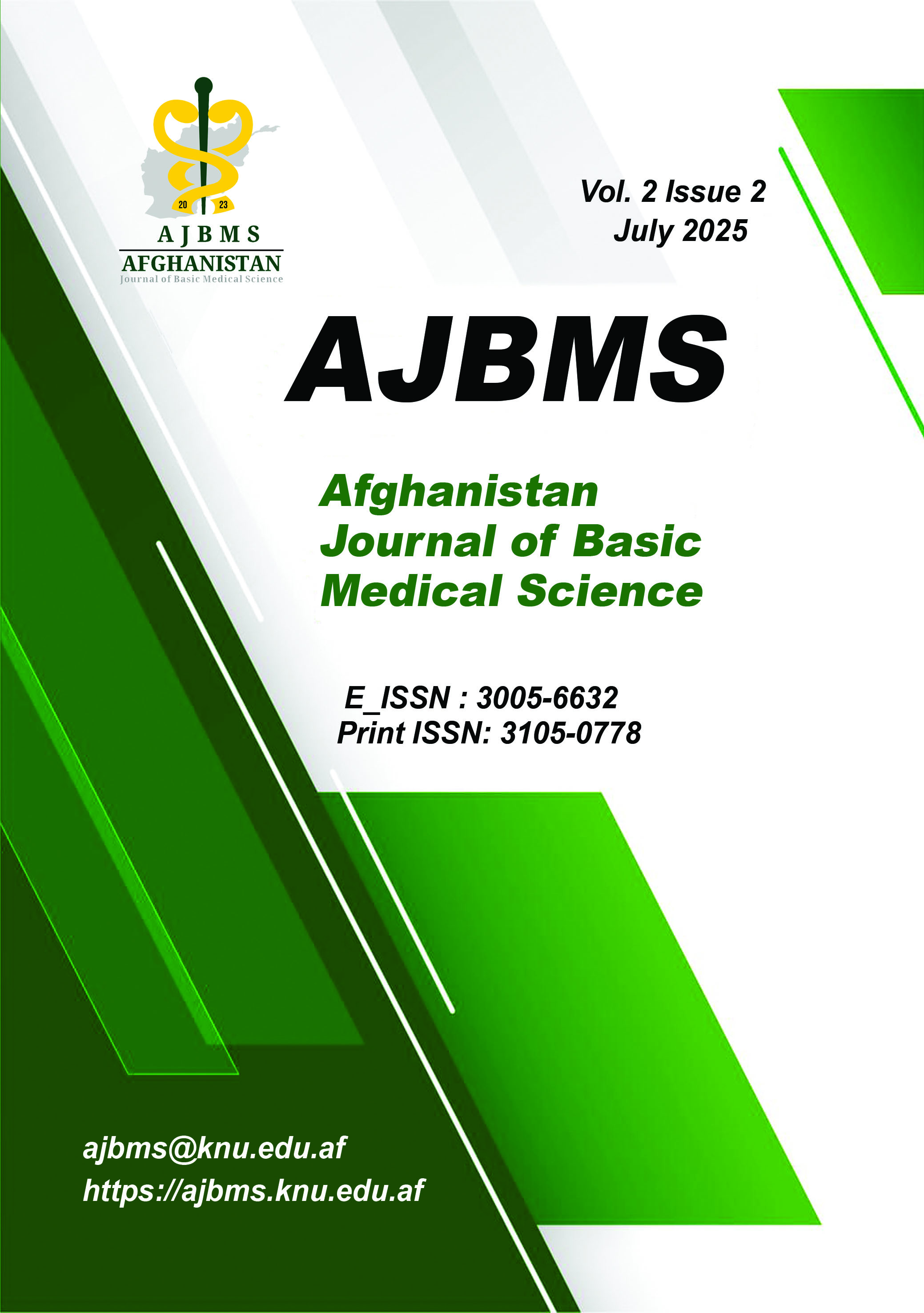Prevalence and Risk Factors of Giardia intestinalis Infection among Patients in Laghman and Nangarhar Provinces in Eastern Afghanistan
DOI:
https://doi.org/10.62134/khatamuni.97Keywords:
giardiasis, Giardia intestinalis, Middle East, Parasite, Parasitology, Prevalence, Public health, Risk factorsAbstract
Background: G. intestinalis, a gastrointestinal protozoan parasite, is a significant cause of diarrhea and abdominal discomfort, particularly in developing countries. This study aimed to determine the prevalence and risk factors associated with G. intestinalis in Laghman and Nangarhar provinces in Eastern Afghanistan.
Methods: A cross-sectional study was conducted among 1,351 patients with gastrointestinal symptoms, including 604 from Laghman and 747 from Nangarhar provinces. Stool samples were collected from each participant using sterile containers and subsequently analyzed under light microscopy to identify the presence of G. intestinalis cysts or trophozoites. Individuals who tested positive for G. intestinalis were identified as cases. An equal number of Giardia-negative individuals were selected randomly as controls for risk factor analysis. All participants identified as giardia-positive completed a structured questionnaire to collect data on demographic, socioeconomic, environmental, behavioral, seasonal, and clinical factors. Statistical analyses were conducted to determine significant risk factors.
Results: Overall, 124 samples (9.2%) tested positive for G. intestinalis, with positivity rates of 7.5% in Laghman and 10.6% in Nangarhar. In Laghman, male sex, domestic animal ownership, soil contact, swimming in unregulated water bodies, and consumption of unfiltered water were significantly associated with infection (p < 0.05). In Nangarhar, female sex and higher monthly income were identified as significant risk factors. The most commonly reported symptoms among positive cases were abdominal pain and diarrhea. Children aged 5-14 exhibited the highest positivity rates.
Conclusion: The findings indicate a notable prevalence of giardiasis among symptomatic patients in Laghman and Nangarhar, with a higher burden in Nangarhar. Various demographic, socioeconomic, environmental, and behavioral factors were identified as significant contributors to infection risk.
Downloads
Published
How to Cite
Issue
Section
Categories
License
Copyright (c) 2025 Afghanistan Journal of Basic Medical Science

This work is licensed under a Creative Commons Attribution 4.0 International License.









